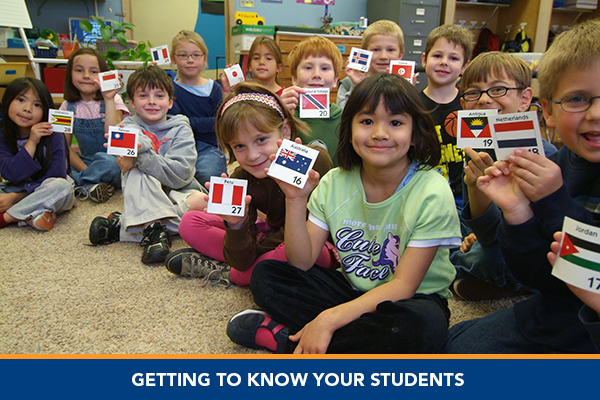
Building a Classroom Community, part 2
Getting to know your students well
The first step in building a strong classroom community is getting to know your students as individuals. When children feel known, understood, and cared about, they are better able to develop relationships with you and with their peers.
Strong relationships and a sense of belonging reduce the potential for challenging behavior and contribute to a positive, successful experience in school. Furthermore, when you know your students well, you will be better able to connect work in the classroom to their lives and interests.
It is important that we as teachers are aware of the facts of our students’ lives: their cultural backgrounds, their own personalities and temperaments, their prior school experiences, and details about their family lives. It is also important to understand what moves our students: what they are curious about, what makes them laugh, what they enjoy doing, and what makes them feel confident and successful.
You might find the following to be enjoyable and effective ways to get to know your students better.
Reaching out to families & students
- Call or visit with families to learn more about their children. Ask families (if appropriate) to complete surveys about their children that include positive questions like, “What is your child curious about?” “What does your child most enjoy doing when not in school?” “What kinds of books does your child like to read?” “What makes your child laugh?”
- In the first weeks and months of school, have lunch with individual students or small groups of students. You might bring a few special placemats to the cafeteria and sit at the end of a table with a small group of students while keeping an eye on the rest of your class. If you don’t have to eat with your class, host the special lunches in your classroom.
Sharing information as a classroom community
- Post a question of the day and have students respond to it by writing their initials in one cell of a bar graph.
- Each week, select a different student to be the featured artist or author. Include an “About the Artist” or “About the Author” statement with each student’s posted work.
Autobiographical assignments
- Have students create and present a poster or box that tells all about them: who the members of their family are, what they like to do, what is special to them, and so on.
- Have students create timelines of their own lives, with the year zero being the year they were born. If they’d like, they can include events that happened before as well as during their lives. They can draw pictures or use photographs to illustrate their autobiographical timelines.
Hannah Chandler is a curriculum writer for MLC.